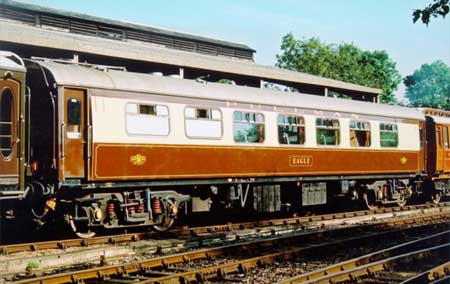

|


|
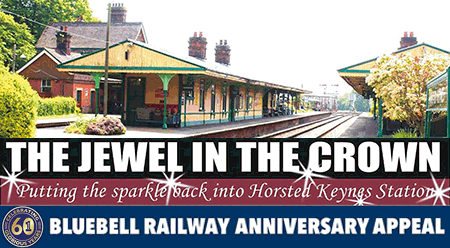
|
|
C&W - Stock Lists: Carriages & Wagons - C&W News - SR Coach Group - Goods Division - Operation Undercover - Technical - Join us 

Carriage Fleet Review - 5Pullman Cars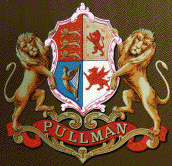 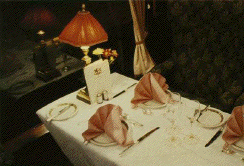 There have been so many twists and turns in the Pullman Cars on the Bluebell that this article, updated through to 2009, is now best considered as a historical record of the situation as it was then.To establish the current state of our Pullman Fleet, please refer to the individual pages for the various Pullman Cars listed on our Stock List.Our Pullman train represents the fulfilment of a long-held Bluebell aspiration. It also provide our catering department with highly marketable and profitable product, the Golden Arrow dining train. It should not be forgotten, however, that our current fleet of Pullmans represents a vast investment of time and effort by many people in the C&W, and of money from both the Horsted Keynes Pullman Car Group and the Railway. Why not start with a wander through the train with these 360 degree views of the interiors of the carriages on the Golden Arrow?
Pullman Brake Third "Car No.54", (Schedule No.157, Built 1923)
Whoever puts it together will also have the experience somewhat akin to making a jigsaw, where only 90% of the pieces are present, and where, to confuse matters, there are other pieces in the box which do not belong to this puzzle. For example, Car 54 contains probably the finest collection of Pullman Lavatory doors in the country; when it was loaded at Carnforth it was not known which door belonged with the coach out of the many that had been removed from the refurbished VSOE cars (which, one assumes, must have received replacement doors).
Pullman Kitchen First "Fingall", (Schedule No.175, Built 1924)
With the arrival of Car 64 in 1987, it was agreed that the HKPCG would finance and make this latter vehicle available for service as the work required was minimal, in exchange for the company taking on responsibility for Fingall's overhaul. The comprehensive nature of the work, involving complete renewal of the vestibules at each end (£5000 worth of new timber), as well as two sections of bodyside and the complete re-construction of the interior, dragged on for several more years. With the completion of the kitchen (which absorbed much of the estimated £200,000 cost of the project) we finally saw a coach emerge in 1992 which was equipped for service and sound of body for (hopefully) decades to come.
We now realise just how much more work there was in a Pullman than in any normal coach. For example, many of our coaches have a wooden structure, to which is screwed an outer steel sheet. The structural members of a Pullman, on the other hand, are both more numerous and more closely spaced. The voids between these are filled with other pieces of wood, cut carefully to shape. This is covered with a further layer (originally match-boarding, now ply-wood) and then finally finished with aluminium sheeting, making a body of much greater strength, but also increasing the labour and materials used many times over compared to any conventional coach. In addition the details of the interior are also much finer and more numerous.
Pullman Parlour Third "Christine" (Car No.64, Schedule No.219, Built 1928)
The modern-day Venice-Simplon Orient Express exclusively uses first class accommodation, therefore, when the VSOE purchased the former Bulmer's Cider Train they were keen to dispose of those third-class vehicles which they did not require. Car 64, the most complete of the vehicles, which had carried the name "Christine" in its Bulmer's days, was offered for sale and the Horsted Keynes Pullman Car Group had to move rapidly to purchase it, at an asking price of £25,000. Money was raised initially by donations, and the balance covered by a loan. This loan was repaid from the proceeds of the Pullman Car supplement levied on ticket sales. When Car 64 was put into traffic in 1988, after some remedial work, it was acknowledged that its condition was such that it could only be expected to run for a few years before major repairs became necessary. The work will involve the complete replacement of the ends, and part of one side which are evidently substantially rotten, as well as the refurbishment of the interior. The only way such work can be contemplated is through the use of contracted-in labour, paid for by a fund built up by the Bluebell Operating company from the Pullman supplements.
In early 2004 the car was dispatched to the VSOE's workshops at Stewarts Lane, where the body side and end timbers were completely renewed. On returning to Horsted Keynes that November, work then started on refurbishing the interior and the seating. The roof was substantially rotten, and so has been replaced, which also involved removing and refitting the inner ceiling. The vehicle has been re-wired, and, completed at the end of November 2006, is now ready to take its place in our Golden Arrow dining train, reverting to the name "Christine" which it carried in its days with Bulmers. Much of the work that has been done should be good for another 75 years! The photo of its interior, from Dave Clarke, shows it, complete with re-trimmed seats, the moquette for which is a reproduction of the original that the car was carrying when withdrawn from BR service.
Pullman Parlour Third "Car No.76" (Schedule No.229, Built 1928) Although built in the same year as Car 64, this was one of the all-steel cars built for the Queen of Scots service. Like Car 64, it came to the Bluebell via Bulmers of Hereford, and the VSOE, being acquired in 1995.
Before arrival it received considerable cosmetic and bodyside repairs by contractors to put it into operating condition, as a replacement for Car 64 in the Bluebell's Golden Arrow dining train, but can probably only run for a limited number of years before major steelwork repairs are required. In early 2002 it received some bodyside repairs and work to maintain the roof in a watertight condition, but its general structural condition is such that much more major work will be required in maybe 5 years time. Given the pre-stressed, riveted, style of body, this will be an expensive and difficult task.
6-PUL EMU Pullman Composite "Bertha", (Schedule No.278, Built 1933) On the Bluebell Railway 1982 - 2000
Upon completion, it won the 1990 ARPS Coach of the Year Award. For the next ten years it was heavily used for our Golden Arrow and lunchtime dining trains. It also had the distinction of being the longest and heaviest coach running on the Bluebell!
Following the conclusion of its ten-year loan agreement it has now been sold to a new owner, and moved from the Bluebell to the Swanage Railway, and is now at Carnforth for a major overhaul.
Pullman Kitchen First "Constance", (Schedule No.89, Rebuilt 1919-20)
In 1919 the Pullman Car Company found itself committed to running new Pullman Trains on both the SECR and the GER. New vehicles under construction could cope with the GER traffic, but to service the Boat Trains for the SECR the Pullman Company purchased the six "Hastings Cars" along with the contemporary "Folkestone Cars". All were rebuilt (in minor ways) and turned out in Pullman Lake Livery (not umber and cream) for the SECR services, and ran until the late 1920s.
The car we have was "SER Drawing Room Car 33", which became a third-class car in 1896, and Pullman Car "Constance" in 1920 as a Kitchen First. The other kitchen car, "Carmen", was destroyed as a result of the Sevenoaks derailment of 1927. The coach body has been part of a building, and had been cut in half, with the metal internal truss-rodding also cut. However, the body is generally in excellent condition, still with 25-Tons Tare plates on both ends, and with much of the Marquetry panelling still intact inside. It has been placed on an ex-SR Bulleid underframe temporarily, and has been tarpaulined over. Its restoration would probably involve the replacement of the current wooden integral underframing with conventional bottom-sides (maybe in steel, Bulleid fashion) and a steel underframe. The body still shows signs of the 1920s all-over lake livery, complete with the Pullman lining and crests.
The restoration of this vehicle is a very long-term aspiration, and one medium-term option is to conserve the fabric by incorporating the two body sections into secure and dry accommodation within the carriage works complex.
Pullman Kitchen First "Eagle", (Schedule No.311, Built 1960) On the Bluebell Railway 2000 - 2008
Brighton Belle EMU Pullman Kitchen First "Doris", (Schedule No.282, Built 1932) 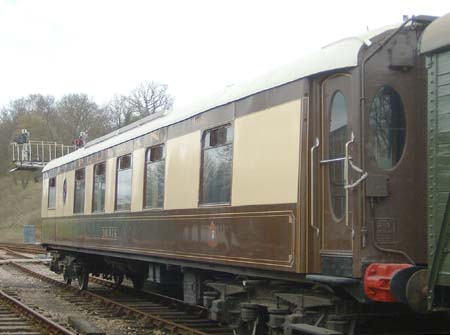 This Pullman Car, formerly located at Finsbury Park, has been purchased by the Bluebell to provide, once overhauled, further kitchen facilities. In the interim, since it is internally in very presentable condition, it is used occasionally as a static catering outlet for cream teas.
This Pullman Car, formerly located at Finsbury Park, has been purchased by the Bluebell to provide, once overhauled, further kitchen facilities. In the interim, since it is internally in very presentable condition, it is used occasionally as a static catering outlet for cream teas.
The work required to put it into service will probably include:
On to the next article in the series, or wander through the Golden Arrow train with these 360 degree views of the interiors of the carriages.


Return to BRPS Home Page, to the Timetable or to Special Events Carriages & Wagons - Intro - Development - Stock Lists: Carriages & Wagons - Carriage Fleet Review - Join us C&W Works News - SR Coach Group - Goods Division - Operation Undercover - Carriage Shop - Technical Pages Visitor Info. - Museum - Trust - Catering - Contacts - What's New - Projects - Locos - Carriages & Wagons - Signals - History - Other - Links - Search - FAQ Why not become a BRPS Member? - Get more involved as a Volunteer Last updated 24 March 2009 and 12 February 2023 by Richard Salmon. © Copyright BRPS. Privacy Policy |
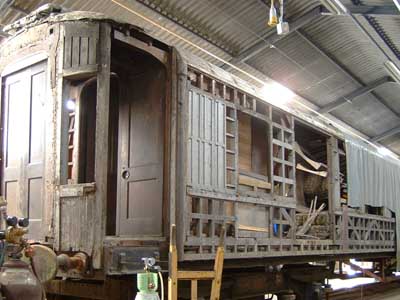
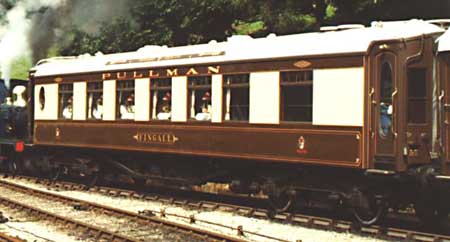
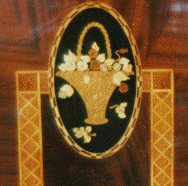
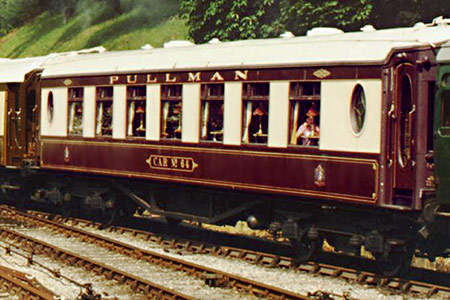
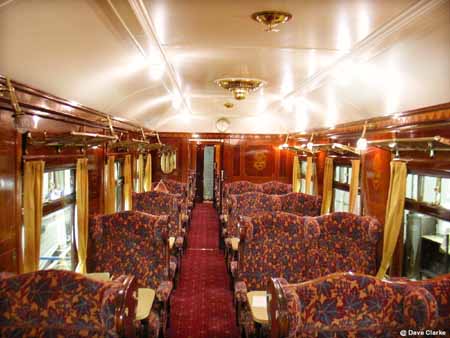
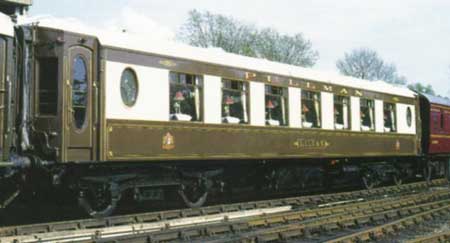
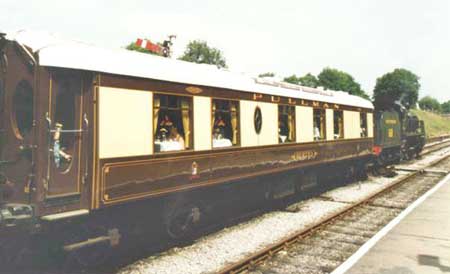
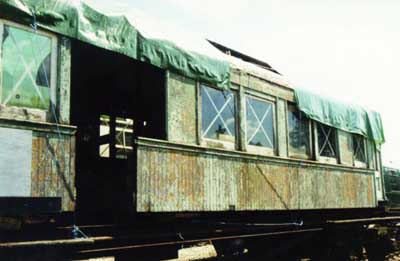
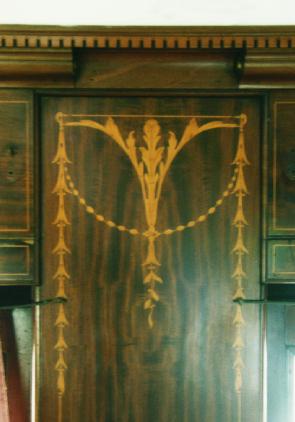 Right: The marquetry panelling is remarkably well preserved.
Right: The marquetry panelling is remarkably well preserved.
